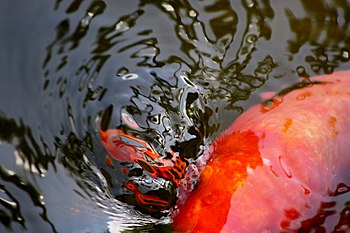The popular anthias family sees three of its species carry the torch in the marine aquarium hobby. They are the Lyretail Anthias, Dispar Anthias and the Purple Queen Anthias. No other Anthias is as popular as these three. Among them however, the Lyretail Anthias is the most popular.
 |
| Lyretail Anthias - Photo: Wikimedia |
They are especially social fishes that are ordinarily found in some of the largest numbers in the wild in areas where water flow is very high. Groups upwards of a 1000 are not infrequent as they swim through the water flows in spots where there is regularly a abrupt decline from the reefs. They are located all the way through the Indo-Pacific and are a exceptionally widespread marine fish in the marine aquarium fish trade.
Their scientific names are Pseudoanthias Squamipinnis and are one of the cheaper members of the genus Pseudoanthias. Costs regularly extend from $15 to about $30 per fish. Males almost always fetch a greater price compared to females. A male will usually have power over a harem of numerous females. In captivity, the rule of thumb is to keep no more than one male per aquarium. Putting two males together will result in extremely hostile behavior until one finally perishes.
While most people decide to buy this fish with the aim of forming a big group in their aquariums, a large amount fail merely because they do not have a large enough aquarium or a big enough group. The separate sexes have surprisingly diverse coloration. Females are frequently hues of orange while male lyretails are red. They are hermaphrodites that start off life as females and have the capability to turn into males in appropriate conditions. This is very much like Dwarf Angelfish.
Smaller shoals are incapable to properly disperse and absorb the hostile character of the males. As the lyretail anthias is an open swimming species that can achieve a length of about five inches, they need larger tanks. The bare minimum needed to keep these jewels is a 100 gallons. However, larger tanks more than two hundred gallons are recommended if a small group is desired.
On the whole, Lyretail anthias are one of the more hostile kinds within the family and must only be housed in bigger fish aquariums. Too often to people get trapped into thinking they can safely house a small group in smaller aquariums only to see them perish one by one. Always ensure they are well fed in captivity.
Although the Lyretail Anthias is a attractive and fairly low-priced member of the Anthias family, they can be pretty aggressive and can harass smaller aquarium mates. After they are familiar with their new environment and are eating prepared foods, they are a resilient saltwater aquarium anthias.
Article Source: EzineArticles |








